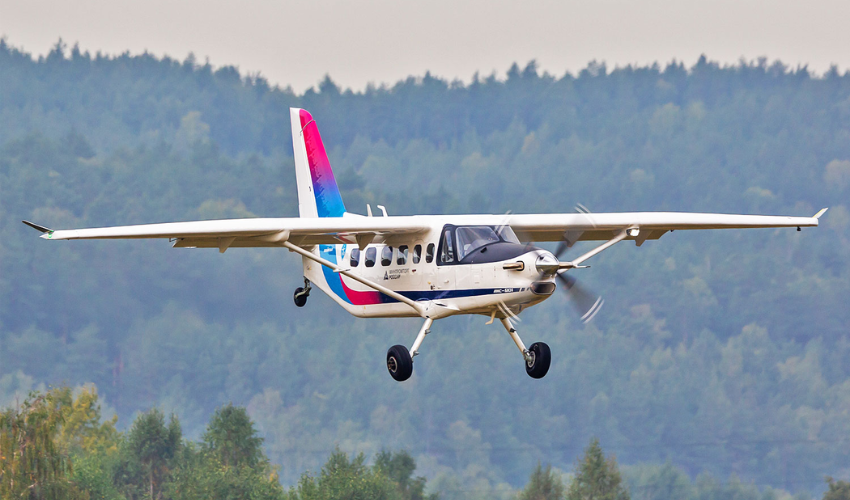Russian Aerospace Plant Turns to Large-Scale 3D Printing for Composite Parts

The Ural Civil Aviation Plant (UZGA), located in Yekaterinburg, Russia, has been utilizing some of Russia’s largest industrial 3D printers to support the production of new aircraft. These include the Baikal LMS-90, a small utility aircraft, the UTS-800 trainer, and the Ladoga regional plane. Since 2024, the plant has installed two printers that are capable of producing parts up to five meters in length.
These machines are being used to manufacture large-scale polymer composite tooling. According to UZGA, the technology has already drastically reduced production times. A forming tool for vacuum molding composite components, which would normally take 10 to 12 weeks to complete, can now be finished in just two to three weeks. The process also requires fewer personnel compared to other traditional methods.

An inside view of a Baikal LMS-90 being retrofitted with 3D printed parts. (Credit: UZGA)
The plant itself relies on two types of additive technology. The first is fused filament fabrication (FFF), which extrudes melted plastic reinforced with 30% carbon fiber to create durable and large-scale structures. Tests at the facility have shown that the printed tooling maintains high accuracy during prints. The second is fused deposition modeling (FDM), which is being used for smaller structural parts for each plane.
For a plant tasked with delivering new aircraft to Russia’s aviation sector, the adoption of advanced manufacturing has become more than a cost-saving measure. Since the 2022 invasion of Ukraine, the United States and the European Union have restricted and prohibited the export of aircraft, spare parts, maintenance, insurance, or technical assistance to Russia. This pivot reflects a trend currently occurring in Russia, where spare parts are being 3D printed to circumvent sanctions.

One of the Russian industrial 3D printers used at the plant. (Credit: UZGA)
As the supply chain remains disrupted, as well as access to foreign technology, Russian manufacturers are accelerating the development of domestic solutions. A recent study by NextMSC showed that Russia’s additive manufacturing industry was worth about 481 million USD in 2023 and is expected to reach about 1.93 billion USD by 2030.
What are your thoughts on these recent developments? Let us know in a comment below or on our LinkedIn or Facebook pages! Plus, don’t forget to sign up for our free weekly Newsletter to get the latest 3D printing news straight to your inbox. You can also find all our videos on our YouTube channel. For more 3D printing news in the aerospace and defense sectors, check out our dedicated page HERE.
*Cover Photo Credit: ADN / Uzga1939







